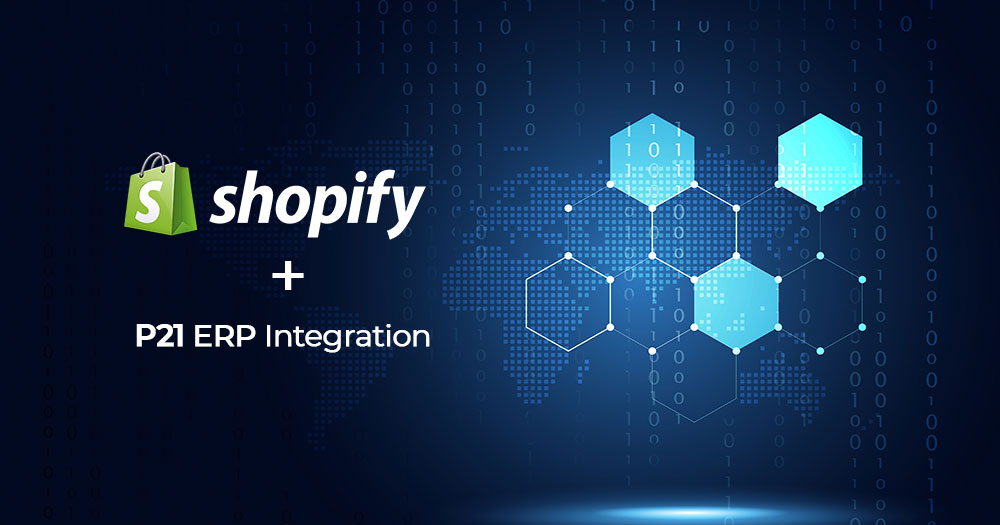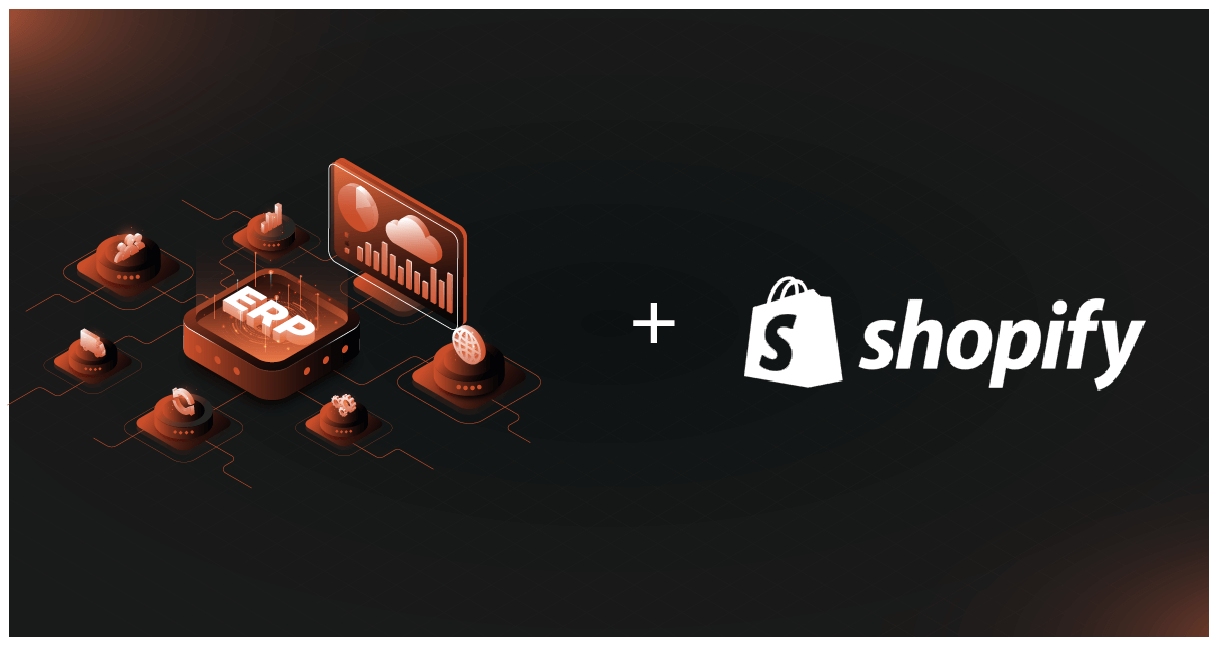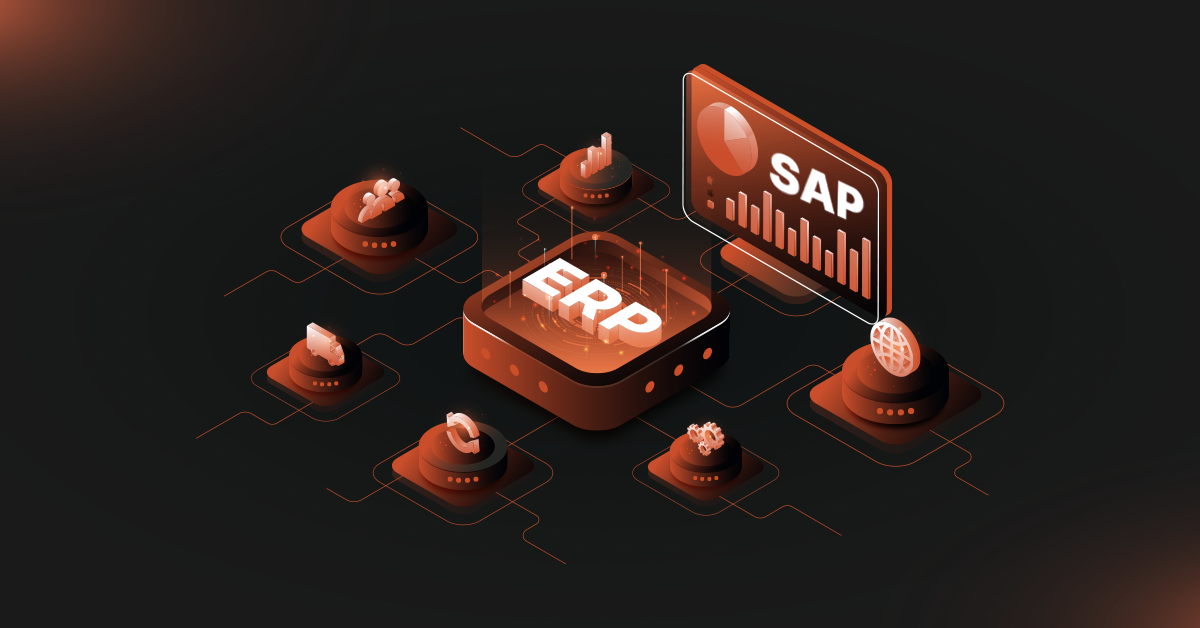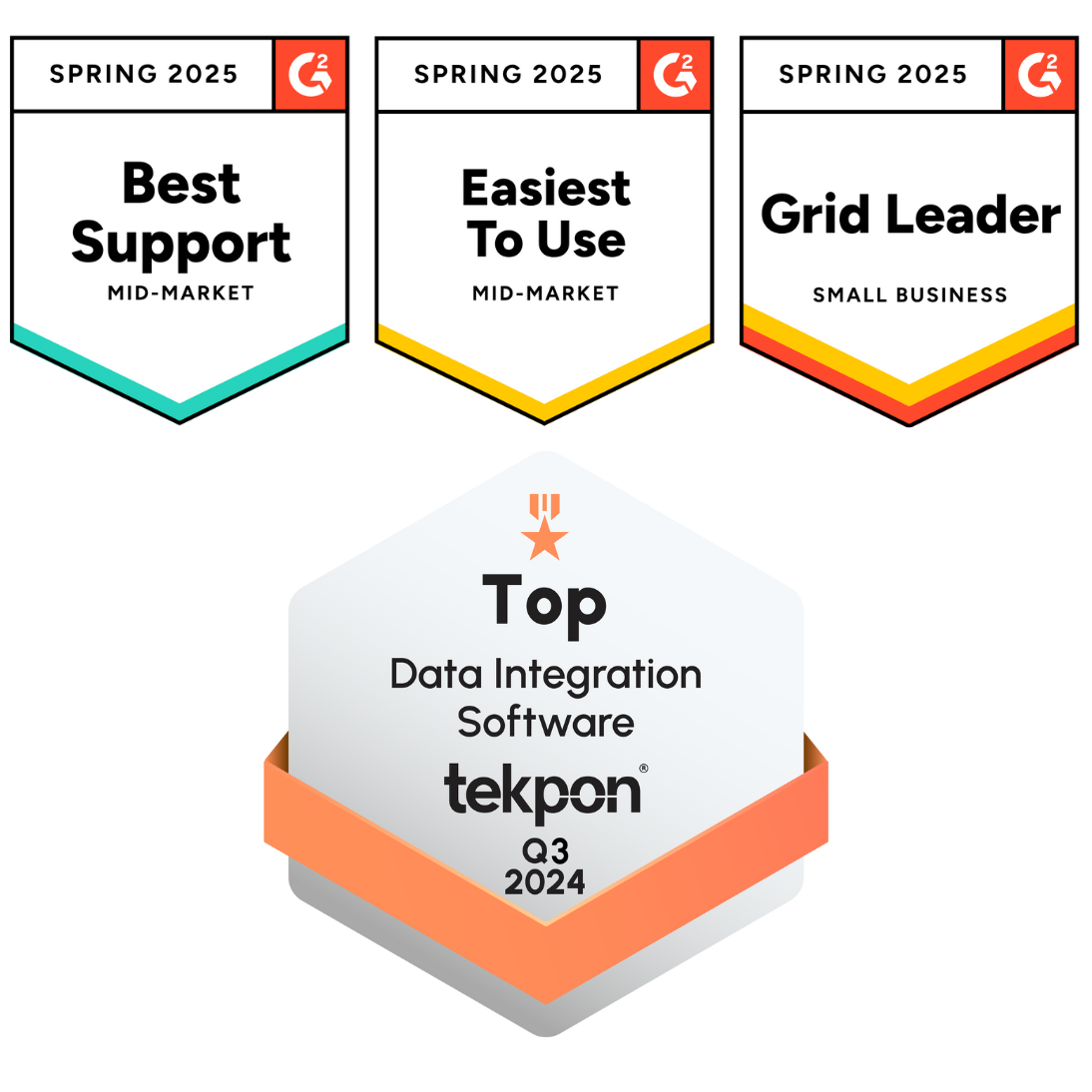Integrating an enterprise resource planning or ERP system with an eCommerce platform is good for both businesses and customers. As exceptional customer experiences become the norm, integration has become important for B2B companies and more so for omnichannel businesses.
However, many businesses put off integration projects simply because they do not have time or want to manage costs. That is why we have compiled a comprehensive guide on SAP Shopify integration to help you get started at the right time.
Why Should You Consider SAP Shopify Integration?
Here are the top 9 reasons why you may want to consider integrating SAP and Shopify:
- Offer real-time visibility into your inventory levels to your customers
- Scale easily by integrating with new applications, marketplaces, and retailers
- Eliminate additional work related to manual data entry between SAP and Shopify
- Effectively manage resupply and your inventory costs
- Provide a complete view and enable easy customer account management so they are able to self-service their account
- Significantly reduce time-consuming ‘where is my order’ calls
- Simplify tax compliance with respect to tax rates and exemptions
- Eliminate the need to hire additional staff for manual order processing
- Deliver an exceptional customer experience
Also read: SAP EDI Integration: A Complete Guide to Streamlining Data Exchange
How SAP And Shopify Can Be Integrated
Here are the three common ways for SAP Shopify integration:
1. Custom API integration
It involves using custom codes to connect SAP and Shopify. This is a direct connection formed between the systems without any middleware.
Pros:
- Custom Integrations gives you complete control over the integration process
- Meets the unique integration needs of your business
Cons:
- Requires a dedicated and experienced development team
- Time-consuming
- If any team member with knowledge of the custom integration leaves in between, the integration project may be impacted
- No centralized place to monitor integration, making troubleshooting difficult
- Lack of end-to-end automation of business processes
2. Native Integration
SAP and Shopify can be connected with their own APIs (application programming interfaces). For instance, Open Connector (REST API) is offered by SAP Business Accelerator Hub or SAP Business One (SAP B1) Integration on the Shopify App Store.
Pros:
- Integration may be included in the subscription at no or low cost
- Apps support teams may be involved to help you build and maintain integration over time
- Pre-built connectors, templates, and processes
Cons:
- Apps may not offer all the integration your business may need
- Limited customization in integration (limited to mostly common use cases)
- Lack of end-to-end automation of processes
3. Integration Platform as a Service (iPaaS)
A cloud-based, middleware solution for integrating on-premise or cloud based applications, including Shopify and SAP.
Pros:
- Centralized view of integrations
- Data protection; privacy and security for sensitive information
- Scalable integrations with a number of systems, apps, data sources, etc.
- Flexible cost structures
Cons:
- May involve an initial learning curve
- Building integrations can take time due to complexities, legacy systems, disparate data, etc.
Also read: Understanding SAP Business One Shopify Integration
Things To Consider Before Integrating SAP And Shopify
If you’re planning to integrate SAP with Shopify, there are quite a few things to think through before getting started. This is to make sure the integration fits your business, works smoothly, and can grow with you. Here’s what you should keep in mind:
1. Understand Your Business Goals and What You’re Trying to Achieve
Before anything else, be clear on why you’re doing this. Do you want to sync product data, pricing, stock levels, orders, customer data or all of it? Do you need the data to sync both ways, or just one way? And how often should that happen: real-time or in batches?
Also, set some goals you can track. Things like faster order processing, fewer inventory mismatches, or fewer customer complaints. This helps you measure if the integration is actually working.
2. Decide Where Your Master Data Lives
One of the first things to sort out is which system is the “source of truth” for different types of data. For example, is pricing managed in SAP? Then that’s where it should stay updated. Is product content handled in Shopify? Then that should remain untouched by SAP.
This avoids confusion later, especially if data transfer is happening on both sides.
3. Choose the Right Integration Method
There’s more than one way to connect Shopify and SAP, so you’ll need to choose the method that fits your business.
- You can go for a custom-built integration using APIs.
- You could use readymade native connectors for simple integrations.
- Or you could try out third-party integration platforms.
The best approach depends on your budget, timeline, technical team, and how complex your data is. You also need to decide which data should be synced in real time and which can be done in batches.
4. Think About Performance and Scale
Shopify has API limits, so if you’re syncing large volumes of data (especially during sales or seasonal peaks), your integration needs to handle that without breaking.
You may need to batch some updates, queue others, and plan for retries when limits are hit. It’s important to test this properly so you don’t get stuck later when traffic spikes.
5. Keep Security and Compliance in Mind
This isn’t just about moving data, it’s about doing it securely. Make sure all data is encrypted, both while it’s being transferred and when it’s stored.
You should also control who can access what. Use secure API keys, tokens, and proper user roles.
And if you’re dealing with customers in Europe or handling payments, you’ll need to make sure everything is GDPR and PCI-compliant.
6. Prepare for Errors and Know How You’ll Handle Them
Even with a solid setup, things can go wrong. An order might fail to sync, inventory might show incorrectly, or a price update might be missed.
So plan for these. Set up alerts, logs, and dashboards so you’ll know when something breaks and more importantly, you’ll know where and why.
7. Test Everything Before You Go Live
This might seem obvious, but don’t skip it. Test small parts of the integration first, check if product updates go through properly, if orders show up correctly, and if stock levels match.
Test at scale too. Push a lot of data and see how it handles the load. Run real scenarios, not just technical checks. And always test in a staging environment that’s close to your live setup.
8. Get Everyone on the Same Page
Integration doesn’t just affect your tech team. It affects your sales team, your warehouse, your customer service team, and others.
Talk to everyone early, understand what they expect from the integration and what processes might change. Once things are ready, train them properly so the transition is smooth.
9. Plan for the Cost and Ongoing Maintenance
Integrations aren’t a one-time setup. Apart from the initial build or tool licensing costs, think about future updates, ongoing support, bug fixes, and any changes in your systems.
Make sure you have the right people or partners in place to manage this long-term. It’s better to plan for this upfront than to be caught off guard later.
10. Make It Flexible for the Future
Your business will evolve, and so will your systems. So, build the integration in a way that it’s easy to update. Maybe one day you’ll want to add a PIM, CRM, or a warehouse system.
Keep things modular and avoid locking yourself into a setup that’s hard to change later. Also, make sure it can handle multi-currency, tax rules, or regional settings if you plan to go global.
Also read: Shopify QuickBooks Integration Explained [Methods, Considerations & Top Tool]
Benefits Of SAP Shopify Integration
Here are some of the key benefits of SAP Shopify integration.
Improved Access and Use of Data
Linking SAP and Shopify ensures synchronized, real-time data to both systems. This centralized information benefits the entire organization, allowing teams like marketing and sales to generate insightful reports for more informed and strategic decision-making.
Visibility Into Inventory
During crises, demand surges and stock shortages can challenge even the best sellers. Without integrating SAP system and Shopify, maintaining accurate inventory information on your Shopify store can be challenging. Integration ensures that both your team and customers have access to reliable, up-to-date inventory records.
Cost Savings
If you don’t synchronize purchase data from SAP with your Shopify online store, you might end up with excess inventory, make inaccurate forecasts, and provide incorrect information to vendors or suppliers. This can lead to stock shortages, unclear transactions, and inefficiency. With SAP Shopify integration, you can avoid these problems and open up more opportunities for cost savings.
Exceptional Customer Experience
Customers prefer omnichannel experiences and self-service options instead of contacting sales representatives for order inquiries. Integrating SAP with Shopify enhances account tracking and personalization. This means customers get access to updates on their Shopify orders status, order history, and shipping information easily and quickly.
Increased Productivity
Following SAP Shopify integration, the consolidation of business data from across the organization eliminates the need for reconciling various data sets or searching for information. It also automates routine tasks, freeing up employees’ hours to focus on high-value activities.
Try DCKAP Integrator For A Smooth Shopify SAP Integration
Now that we’ve gone over all the important things to think about before integrating SAP with Shopify, you’re probably wondering how to actually make it all work without getting buried in complexity. That’s where DCKAP Integrator comes in.
It’s a low-code, cloud-based ERP-first integration platform built for manufacturers and distributors. It works well for any business that wants to connect their systems without the usual back-and-forth or custom builds. Whether it’s your ERP, CRM, or eCommerce platform like Shopify, or even something like EDI, DCKAP Integrator helps you connect it all without juggling multiple tools or doing things manually.
Plus, it’s not just about plugging in data. You can set up business rules, automate workflows, reduce manual work, and keep your teams from bouncing between separate systems. It’s built to handle real business needs, things like syncing inventory and orders, cleaning up data silos, and making sure everything works smoothly across your stack.
Here’s a quick look at what it offers, basically everything you’d expect from a solid iPaaS solution:
- You don’t need internal technical expertise to build and manage workflows.
- ERP, CRM, Accounting, EDI, whatever’s in your stack, you can integrate it.
- Control how and when your data moves across systems.
- Push updates instantly or schedule them, it’s flexible.
- Intuitive and user-friendly dashboards and logs so you always know what’s happening.
- Handles large volumes without slowing things down.
- Our team’s always there if you need help making changes.
Final Words
Finally, it’s about reducing the manual work, avoiding errors, and making sure your teams aren’t wasting time fixing things that should just work. And for that, you need the right setup and the right integration partner.
If you’re curious to see how DCKAP Integrator works in real life, we’d be happy to show you. Book a quick demo and take a look at how you can get Shopify and SAP (and whatever else you use) working together without the usual stress.
FAQs
What ERP systems integrate with Shopify?
Shopify integrates with a wide range of ERP systems like SAP, Microsoft Dynamics, NetSuite, and Infor. If you’re using SAP, whether it’s SAP Business One or SAP S/4HANA, you can connect it with Shopify to manage everything from inventory to orders in one place. It really depends on your specific needs and what you want your integration to handle.
What ecommerce platforms integrate with SAP?
Apart from Shopify, SAP can be integrated with other ecommerce platforms like Magento, BigCommerce, WooCommerce, Salesforce Commerce Cloud, and Adobe Commerce. So if you ever expand your online presence beyond Shopify, your SAP setup can still support it.
What are some popular integration solutions for Shopify SAP integration?
Besides DCKAP Integrator, other tools people look into include Celigo, MuleSoft, Jitterbit, and Boomi. However, DCKAP Integrator is purpose-built for manufacturers and distributors, so if that’s your business, it usually fits better with fewer adjustments.
Which is the best integration solution for SAP and Shopify?
The “best” solution depends on your business size, technical capacity, and long-term goals. That said, tools like DCKAP Integrator check all the boxes when it comes to operational efficiency, customer satisfaction, and business growth. It’s designed to handle complex workflows and reduce manual work while being flexible enough to meet specific needs.





